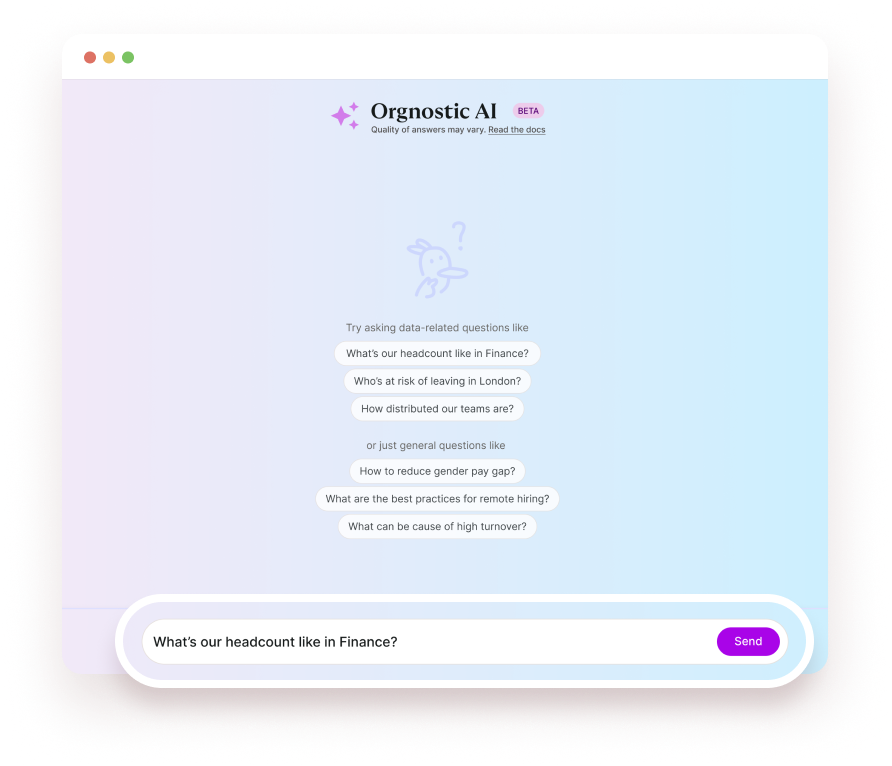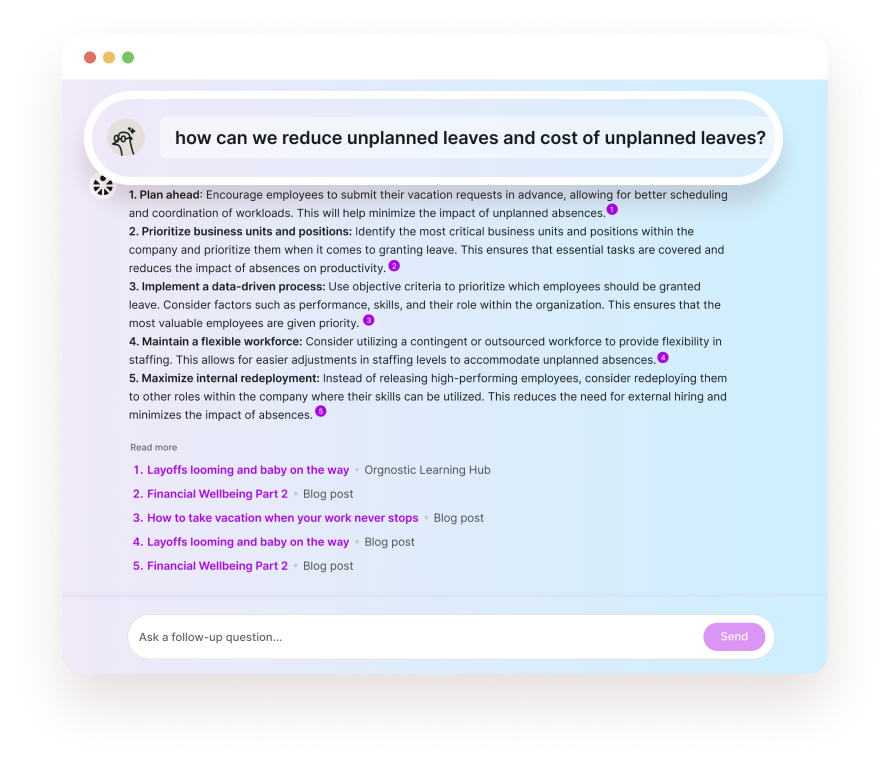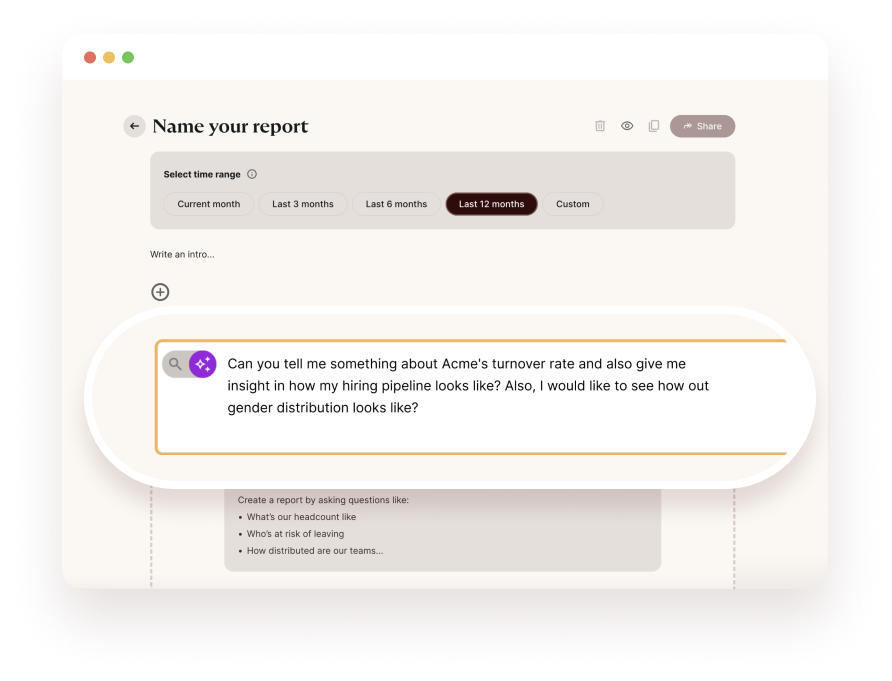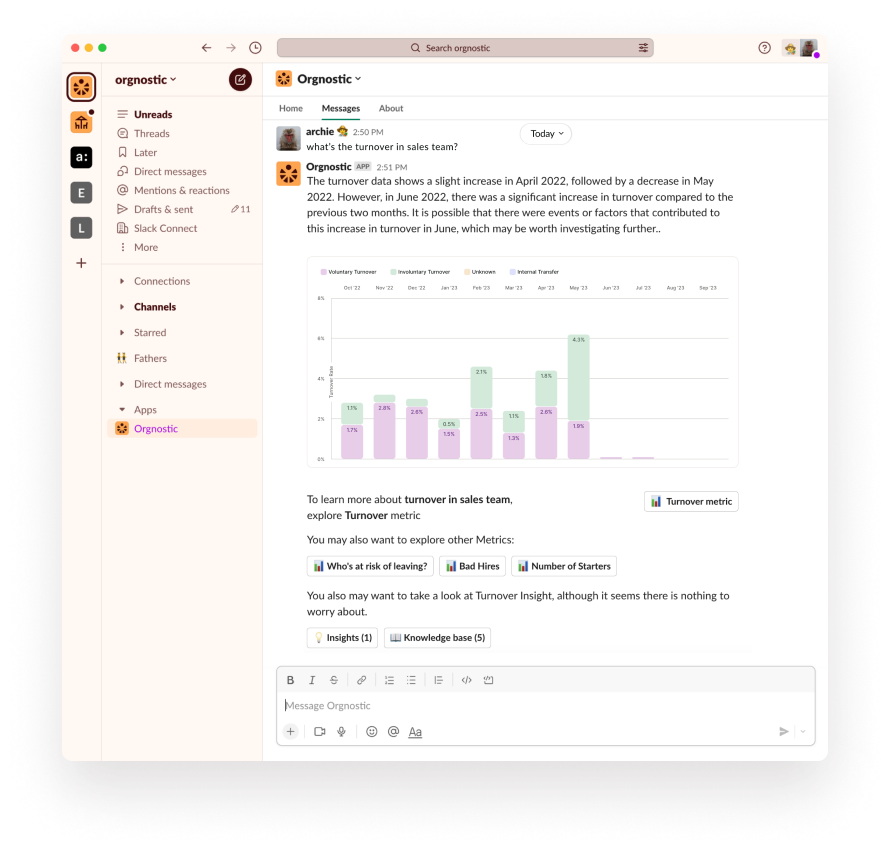AI IN PEOPLE ANALYTICS
Generative AI for HR is here.
Answers to all organizational questions at your fingertips. Be the first one to explore and shape the future of people analytics.
ORGNOSTIC IS Used by data-driven HR and People Analytics teams At:
What you get
 Metrics Search
Metrics Search
AI Metrics Search
Ask questions in a natural language — and get relevant data visuals with a fully contextualized summary and highlights of the metrics of choice.
Our AI Metrics Search tool makes it easy to get relevant data visuals and summaries of your organization’s metrics. Using our metamodel and language models, we analyze data from multiple systems and generate graphs and responses to your questions. You don’t need to be an analyst or know the names of the metrics to ask about your organization and get an answer. With AI Metrics Search, you can ask questions in natural language and get the information you need without any hassle.

 Prescriptive Summaries
Prescriptive Summaries
AI Prescriptive Summaries
Ask things like “how to prevent sales turnover?” and get a summary of responses from over 100,000 HR blogs, articles, IO research papers, and benchmarking datasets on which we trained our models.
Our AI Prescriptive Summaries tool is like having a personal HR robot assistant. With access to over 100,000 HR blogs and research papers, as well as benchmarking data, our tool provides follow-up questions and prescriptions based on a vast array of public research. Ask organizational improvement questions and get quick summaries from highly relevant knowledge pools.

 Report Maker
Report Maker
AI Report Maker
Ask for “a diversity report for the past twelve months” — and get a fully-fledged report template without clicking, copying/pasting, and formatting errors.
With our generative AI technology, you can simply ask for a report on any HR topic and receive a fully-fledged template without any manual labor. Built with language models and a metamodel, our tool can analyze data from multiple systems and generate reports that are fully contextualized and relevant to your organization’s needs. Now, you can have the power of an analyst at your fingertips with just a simple request to our AI assistant.

 Slack Integration
Slack Integration
Slack Integration
All of the above, directly in Slack. Get a summary of all metrics and insights for your organization, answers to wider organizational questions, and make the right decisions based on the data, faster than ever before.
With our Slack integration, managers throughout the organization can get valuable data and insights related to their teams and departments, but without the need to go through a vast set of metrics. By simply asking the question that they would ask a people analyst, managers can now get the actionable insights as fast and easily as possible — directly through Slack. This reduces the workloads of people analytics teams so they can outsource general questions to the Orgnostic platform and instead use their time on high-impact analytics for their organization.

How Orgnostic works
Orgnostic uses large language models to help summarize findings from the data across multiple systems you use: HRIS, ATS, LMS, PM, employee surveys, and more than 100,000 selected HR blogs, articles, IO psychology research papers, and benchmarking datasets.
- 01 Connect the data from your systems in just a few easy steps
- 02 Let our system crunch it and generate metrics and insights
- 03 Ask questions and get answers
- 04 Build reports and engage your team and managers
FAQ
Artificial intelligence, known as “generative” can produce new data or information that is similar to the training data it has learned from. Generative AI can be used in people analytics to analyze and produce fresh insights from HR data, including employee feedback, performance data, and demographics.
Generative AI can assist HR teams in spotting previously hidden patterns and new insights in employee data. This may result in better judgment, greater employee engagement, and more effective HR procedures.
In the field of people analytics, generative AI is often used to predict employee turnover, find skill gaps in the workforce, and suggest personalized plans for career development for employees.
Generative AI requires large amounts of high-quality data to work with. This is why, at Orgnostic we use large language models to help summarize findings from the data across multiple systems you use: HRIS, ATS, LMS, PM, employee surveys, and more than 100,000 selected HR blogs, articles, IO psychology research papers, and benchmarking datasets.
Assuring the fairness and accuracy of the generated insights is one challenge. Maintaining data privacy and security while working with sensitive employee data presents another challenge. Orgnostic addresses these challenges with a robust permission system, data cleaning functionalities, and references behind insights.